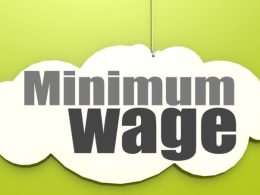Have you ever had a dream of publishing a book but don’t know where to begin? Look no further! Whether you’re an aspiring writer or a seasoned author, Canada offers various options for getting your work out there. From traditional publishing to self-publishing, the process may seem daunting at first, but with these easy steps, you’ll be one step closer to holding your published book. So grab a pen and paper (or laptop), and let’s dive into how to publish a book in Canada.
How to Publish a Book in Canada?
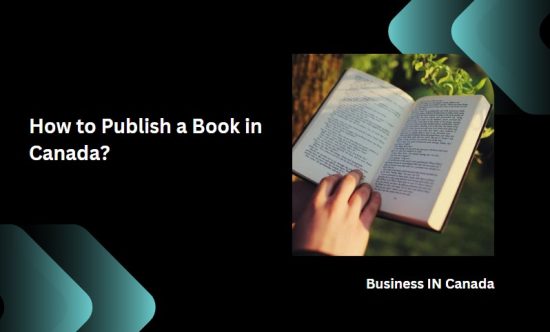
The first step in publishing your book in Canada is to ensure it is complete and ready for publication. This means going through several rounds of editing and proofreading so your manuscript is error-free and polished.
Once you are confident that your work is ready for publication, the next step is to research publishers or literary agents interested in representing you. First, doing some background research on potential publishers, looking at their submission guidelines, previous publications, and reputation within the industry is important.
When submitting your manuscript to a publisher or agent, follow their specific submission guidelines carefully. Some will require a query letter outlining the premise of your book; others may ask for a synopsis or sample chapters.
If you decide to self-publish instead of going through a traditional publisher or agent, there are many online platforms available where you can upload and distribute your book. These platforms typically offer different levels of service at varying costs depending on what type of support you need.
Once published, promoting your book effectively by creating an author website and using social media channels like Twitter and Facebook to reach potential readers is essential. Building relationships with bloggers and reviewers can also help get the word out about your work!
Traditional Publishing
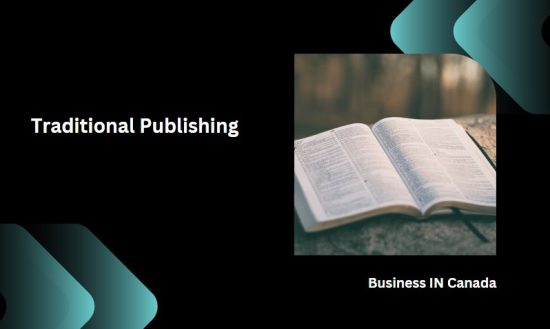
Traditional Publishing is a long-established method of publishing books that has been around for centuries. It entails submitting your manuscript to a publisher who will decide whether or not to publish it. If they do, they will handle all aspects of the book’s production, from editing and cover design to marketing and distribution.
To start with Traditional Publishing, you need to research publishers in Canada who are interested in your genre. Once you’ve found some potential matches, you should carefully review their submission guidelines before sending them your manuscript.
When submitting your manuscript through traditional publishing channels, wait long before receiving feedback. Publishers can take anywhere from weeks to months to respond.
If a publisher decides to work with you on your book project, expect open communication about everything related to the process: deadlines, costs involved, royalties and more.
How to Publish Through Traditional Publishing?
Traditional publishing is a time-honoured method of getting your work out into the world. There’s something satisfying about knowing your book will be in brick-and-mortar stores, available for anyone to pick up and read.
You’ll need to find literary agents or publishers interested in your genre and style to publish through traditional means. This involves researching agents and publishing houses, writing query letters or attending events where you can pitch directly to industry professionals.
Send a Query to the Chosen Company
Publishing a book in Canada can be an exciting journey with various options available for authors. Traditional publishing may seem like the most challenging route, but it has advantages if you want to reach a broader audience through established distribution channels.
Always do thorough research when choosing a publisher or self-publishing platform. Send queries to multiple companies before deciding which one will help bring your vision to life. With persistence and hard work, anyone can successfully publish their book in Canada!
Wait to Contact Back
After submitting your manuscript to a traditional publisher, waiting for their response is important. This can be an anxious time, but it’s essential not to rush them or bombard them with follow-up emails.
Remember that publishers receive countless submissions and have a lot of work on their plates. Therefore, they need time to thoroughly review your manuscript and determine if it fits their publishing goals.
If you don’t hear back within the timeframe they provided, politely send a brief email asking for an update on the status of your submission. But don’t expect an immediate reply – publishers are busy people!
It’s possible that you won’t receive a response from them for several months. In the meantime, focus on other writing projects or start planning how you’ll promote and market your book once it’s published.
While waiting for a response can be agonizing, patience is key when working with traditional publishers. Trust in the process and keep working towards achieving your publishing goals!
Talk to Your Publisher About Everything

When it comes to traditional publishing, there are a few things you need to keep in mind. Firstly, it’s important to understand that your publisher is your business partner – they will handle everything from editing and cover design to distribution and marketing. Therefore, communication is key.
Ensure you have an open dialogue with your publisher about all aspects of the publishing process. This includes discussing any changes or suggestions they may have for your manuscript and being transparent about any concerns or questions you may have.
Additionally, make sure you’re clear on the terms of your contract. For example, what percentage of royalties will you receive? How long does the contract last? Are there any restrictions on what you can do with the work?
It’s also important to be realistic about expectations. While publishers will certainly help with promotion and distribution, ultimately, it’s up to the author to promote their work through book signings, readings and social media presence.
By keeping lines of communication open between yourself and your publisher throughout every step of the process – from editing right through until publication day – you can ensure that everyone is on the same page and working towards a common goal: making sure your book reaches its full potential!
Publishing It
After all necessary revisions are made and both parties grant final approval, the exciting part is publishing! The process may take several months, but seeing your work in print makes all those efforts worth it.
Self-publishing is another option for authors who want more control over their books’ production. With self-publishing websites like Amazon KDP and IngramSpark readily available today—it has never been easier for indie authors to get their works out there into readers’ hands.
Self Publishing
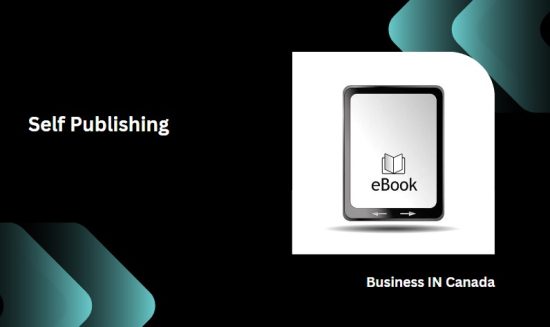
Self-publishing is a popular option for authors who want more control over their book’s content and design. With self-publishing, you can bypass the traditional publishing process and publish your book on your own terms.
Self-publishing allows authors to choose their work’s cover design, content, pricing, and distribution. The process can be quite time-consuming and demands meticulous attention to detail. However, it is also an excellent way for authors to gain more control over the publication of their books.
Self-publishing gives you the opportunity to reach a wider audience by making your book available for sale on various websites and in stores around the world. You can also promote your book on social media platforms like Facebook and Twitter. Many online resources can help you get started if you are interested in self-publishing.
How to Publish Through Self Publishing
Self-publishing is an excellent option for those who want to keep control over their work. It allows you to publish your book without the need for a traditional publishing house. Here are some steps to help you publish through self-publishing.
Select a Self-publishing Website
Selecting a self-publishing website is an important step in the process of publishing your book. There are many options available, so it’s important to choose one that fits your needs and budget.
First, research different websites to determine which one aligns with your goals. Look at their pricing structures, services offered, and customer reviews.
Consider whether you want to use a platform that offers distribution or if you prefer to handle distribution on your own. Some platforms will distribute your book through major retailers like Amazon and Barnes & Noble, while others require you to do this yourself.
Take into account any additional services the platform may offer, such as editing or cover design assistance. These can be helpful if you’re new to self-publishing or need help with certain aspects of the process.
Don’t forget about formatting requirements for each platform – some may have specific file types or sizes they accept for submissions.
Ultimately, choosing a self-publishing website comes down to finding one that suits all of your individual needs as an author.
Create a Cover
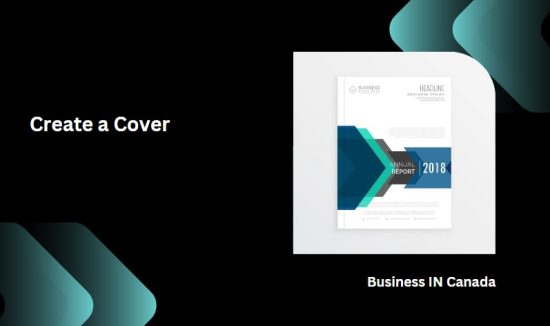
The cover of your book is the first thing a reader will see, and it needs to be eye-catching enough to make them want to pick it up. A great cover can make all the difference between a book that sells well and one that doesn’t.
When creating your cover, you need to think about the genre of your book and what kind of design will appeal to readers in that genre. For example, if you’re writing a romance novel, your cover might feature an image of a couple embracing or holding hands.
You also need to consider the title and author name placement on the front page. This information should not only be visible but legible from afar too!
It’s important to keep things simple yet visually appealing when designing your cover – don’t overcrowd it with too much text or images. You can always get feedback from others before finalizing it.
Remember, even though we shouldn’t judge books by their covers – readers do!
Submit Your Book on the Website

Submitting your book on a self-publishing website is one of the most critical steps in getting it published. With so many different websites, choosing the right one can be daunting. However, there are a few key factors to consider that will help you make an informed decision.
Firstly, make sure the website you choose has a good reputation and a history of successful publications. Next, look for reviews from other authors who have used their services to get an idea of what kind of experience you can expect.
Next, check whether they offer services such as editing and formatting or if those need to be done separately. Some websites also provide marketing tools that can help increase exposure for your book.
Once you’ve selected your preferred website, create an account and carefully navigate the submission process. Make sure all required fields are filled out accurately and completely before submitting your manuscript.
It’s essential to note that some sites charge fees for publication while others take a percentage of sales revenue generated by your book. Be sure to read through all terms and conditions before committing to any particular platform.
By following these tips when submitting your book on a self-publishing site, you’ll increase your chances of having it accepted and ultimately becoming a published author in Canada!
Publish It
Once you have successfully gone through traditional or self-publishing, it’s time to publish your book! This is an exciting step in the journey towards becoming a published author.
If you are going through traditional publishing, your publisher will take care of this step for you. They will handle all aspects of printing and distribution. However, if you are self-publishing, there are a few things to keep in mind when it comes to actually publishing your book.
Firstly, make sure that everything looks good on the platform where you intend to publish your book. Next, check that the formatting is correct and that there aren’t any glaring mistakes in spelling or grammar.
Next, set your book’s release date so readers can anticipate its arrival. You can choose to do a soft launch initially and then market more heavily after receiving initial feedback from early readers.
Don’t forget about marketing! Even if your book is well-written and beautifully formatted, it won’t sell itself without proper promotion. Utilize social media platforms like Twitter and Facebook to get the word out about your new publication. In addition, consider reaching out to bloggers or other influencers who may be interested in reviewing or promoting your work.
Publishing should be celebrated as an exciting achievement in one’s writing career – just remember not to stop here! Keep writing and improving with each new project you take on.
Conclusion
Publishing a book in Canada has become easier with the advent of self-publishing websites. However, traditional publishing also remains a viable option for authors who want to go through the rigorous process of getting their work published by established publishing houses.
Whatever route you take, it is important to understand that both options require dedication and hard work. You need to be willing to put yourself out there and accept criticism in order to improve your writing skills and create a book that readers will enjoy.
Remember to do your research before selecting a publisher or self-publishing website, read reviews from other authors who have used their services, and ensure that you understand all costs involved before proceeding.
With these easy steps on how to publish a book in Canada, you can finally realize your dream of sharing your unique story with the world.
FAQ – How to Publish a Book in Canada?
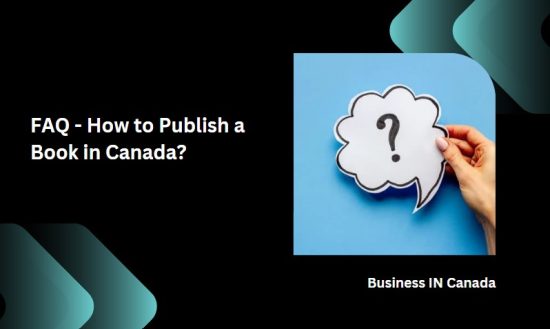
How much does it cost to publish a novel in Canada?
One of the biggest questions that aspiring authors often have is how much it will cost to publish their book in Canada. The truth is, there’s no one-size-fits-all answer to this question, as the cost can vary depending on a number of factors.
First and foremost, if you choose to go with traditional publishing, you won’t be responsible for covering any upfront costs. Instead, your publisher will cover things like editing, design work, printing and distribution. However, keep in mind that traditional publishers typically only accept a small percentage of submissions each year.
If you decide to self-publish your novel in Canada instead, there are several costs that you’ll need to consider. For example, hiring an editor or proofreader can cost anywhere from $500-$2,000, depending on the length and complexity of your manuscript.
Depending on how intricate your book cover looks, you’ll also need to invest in cover design and formatting services, ranging from $200 to $1,000.
Finally comes marketing – promoting your book through social media ads or other channels can also set you back some money (ranging from hundreds to thousands).
However – it’s important not to dwell over these financial figures but to see them as an investment into realizing your dream: publishing a book!
How do I publish my first book?
Publishing your first book can be an exciting yet daunting experience. The publishing process may seem complicated, but it is achievable with the right approach and guidance.
The first step in publishing your book is to ensure it is complete and polished. Ensure you have edited and proofread your work thoroughly to eliminate errors or inconsistencies. It’s also crucial to get feedback from beta readers who can provide valuable insights into areas needing improvement.
Once you’re confident about the quality of your manuscript, identify publishers who align with the genre of your book. Then, research their submission guidelines carefully before submitting a query letter or proposal outlining why they should publish your work.
Another option for publishing a first book is through self-publishing platforms. Self-publishing allows authors greater control over their content and royalties but comes at a cost, as authors are solely responsible for marketing their books.
Regardless of which route you choose, always remember perseverance pays off in this industry – don’t give up!
Do publishers pay you to write a book?
One of the most common misconceptions about publishing a book is that publishers pay you to write it. Unfortunately, this is not always the case. Most traditional publishers only offer an advance payment to authors whose manuscripts they select for publication.
The amount of the advance varies depending on factors such as genre, author experience, and market demand. However, advances typically range from $1,000 to $10,000 for first-time authors.
It’s important to note that the advance payment is essentially an “advance” against royalties earned from book sales. So once your book starts selling, you’ll need to earn enough royalties to cover the initial advance before receiving any additional payments.
In some cases, publishers may also offer royalty payments instead of or in addition to an advance. Royalties are a percentage of each sale made and can range from 7%–15% depending on various factors, including format (print or ebook), retail price point and distribution channels.
Ultimately though, whether or not you receive payment upfront from a publisher depends on multiple variables when evaluating your manuscript suitability for their publishing program – so don’t count on being paid just yet!
Can I publish my book for free?
If you’re an aspiring author, you might be wondering if there’s a way to publish your book for free. The short answer is yes – it is possible to self-publish your book without spending any money upfront.
One option is to use online platforms like Amazon KDP or Draft2Digital, which allow you to upload and distribute your ebook for free. You won’t have to pay anything until someone purchases your book, at which point the platform will take a cut of the royalties.
Another option is to create a blog or website and release chapters of your book regularly, building up an audience over time. Once you’ve gained traction and built up anticipation for your full novel, you can sell it as an ebook or print-on-demand paperback through services like Lulu or CreateSpace.
However, keep in mind that publishing for free does come with its own set of challenges. Without investing in professional editing or marketing services, it may be more difficult to attract readers and make sales. Additionally, many literary agents and traditional publishers may view self-published works less favourably than those put out by established publishing houses.
Ultimately, whether or not publishing for free is the right choice depends on your goals and circumstances as an author.
How much does a first time author make?
Publishing a book is an exciting journey, and there are various ways to achieve it in Canada. The traditional publishing route requires patience and effort while waiting for publishers to respond, but the rewards can be significant. On the other hand, self-publishing offers more control over your work with upfront costs.
Before deciding on how to publish a book in Canada, consider the financial aspect of this venture. The cost of publishing depends on factors such as editing, cover design, marketing expenses, and printing fees.
As a first-time author in Canada, you might wonder how much money you could make from your book after all these investments. Generally speaking, authors receive about 10% royalties from each sale if they go through traditional publishers. However, it’s essential to note that advances vary depending on the publisher’s budget and interest in your manuscript.
If you choose self-publishing platforms like Amazon Kindle Direct Publishing or Kobo Writing Life, you can earn up to 70% of your book’s royalties per sale.
Ultimately though, success isn’t just measured by monetary gain alone – seeing people read and enjoy your story can be hugely rewarding too!
In summary:
- Traditional publishing involves waiting for publishers’ responses
- Self-publishing gives more control but comes with upfront costs
- Consider financial aspects such as editing expenses when choosing between methods
- First-time authors generally receive around 10% royalties from traditional publishers
- Authors who self-publish may earn up to 70% royalties per sale
Remember that no matter your chosen method, writing is ultimately about sharing stories!







